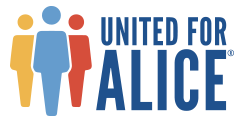What is Upward Mobility?
Upward Mobility, also referred to as Economic Mobility, refers to the ability of an individual, family, or group to improve their social or economic status within a society. It often means moving from a lower to a higher social class, income bracket, or level of education and occupation.
Bridges to Prosperity Northern Illinois assists communities in creating Upward Mobility for its residents using a variety of tools, resources and framework these include:
Urban Institute Upward Mobility Framework: The Urban Institute’s Upward Mobility
Framework provides an evidence-based foundation for efforts to advance upward
mobility and racial equity for people and communities. It offers local leaders a holistic
definition of upward mobility and identifies factors they can influence to increase
mobility for all people, especially those historically excluded from prosperity. The
framework includes a three-part definition of economic and social mobility,
a focus on racial equity, five pillars of support people need from their communities,
and 24 predictors of the strength of these pillars that communities can influence to
help more residents reach long-term prosperity. Learn more here: Upward Mobility Framework | Urban Institute | Upward Mobility Initiative
Mobility Experiences: Economic mobility, a measure of growth in income or wealth, has been in decline in the US for decades according to absolute measures. Ninety percent of all children born in the 1940s would go on to earn more than their parents. Less than 50% of those born in the 1980s could say the same. Reviving economic mobility is not only critical to improving quality of life for millions of Americans, but also to unleashing growth across the economy and renewing social cohesion. MobilityExperiences.org analyzed hundreds of research studies and surveyed thousands of Americans to identify 28 life experiences that
drive lifetime income. We call them the Mobility Experiences. Learn more here: Mobility Experiences
Distressed Communities Index: The Distressed Communities Index (DCI) brings attention to the deep disparities in economic well-being that separate U.S. communities. The latest Census data is used to sort zip codes, counties, and congressional districts into five quintiles of well-being: prosperous, comfortable,
mid-tier, at risk, and distressed. The index allows us to explore disparities within
and across cities and states, as well. Learn more here: 2024 DCI Interactive Map - Economic Innovation Group
United Way ALICE Report: ALICE is an acronym for Asset Limited, Income Constrained, Employed — households that earn more than the Federal Poverty Level, but less than the basic cost of living for the county. While conditions have improved for some households, many continue to struggle, especially as wages fail to keep pace with the rising cost of household essentials (housing, child care, food, transportation, health care, and a basic smartphone plan). Households below the ALICE Threshold — ALICE households plus those in poverty — can’t afford the essentials. United way has compiled reports for each County in Illinois. Learn more here: Home | UnitedForALICE
Each of the Counties we serve can view their metrics on the individual County pages from the drop-down menu above. View the full five County map with data here.
To learn more about how we can assist your community in understanding your metrics and data to create upward mobility or a poverty reduction strategy, please contact Mary at MaryC@BridgesNorthernIL.com.




